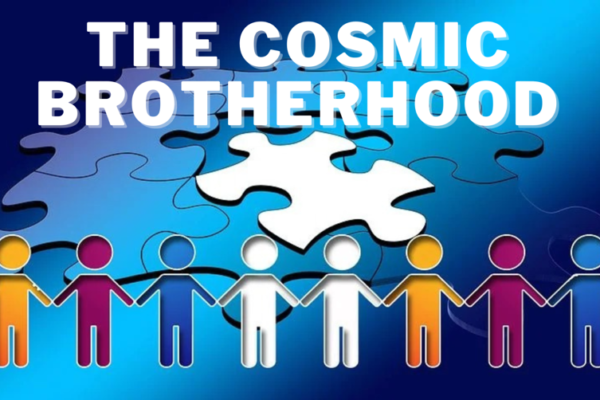by Dr. Hans-Joachim Rudolph, Microvita Research e.V.
In a recent article, I asked whether the components of the ‘Four Chamber Model’ stand for different entities, various stages of a process or different aspects of one of the same thing (1), wherefrom the question arose: What does it mean to be something? Usually, things are composed of parts. But in order to be one thing, these parts must be integrated under one principle. So, obviously, we can take a stone, a hammer or a house as one thing. But what about an organization, entangled particles, or the composite of an observer and the observed?
Consider a person focussing a star: Although the star might be far far away, a photon, being created in the plasma of that star, reaches the retina of the observer instantaneously; because, for the photon, no time passes while travelling to the observer at the speed of light. So, there is a certain unity of origin and target. Or, consider the observer effect, in which the act of observation alters the behavior of the observed. Or, consider quantum entanglement, where the quantum state of the particles of a group cannot be described independently from each other, even if they are separated by large distances. So, in all these cases we find a unity among parts that would normally be considered separate and independent.
Let us now consider the visitor of an art gallery. He or she (X) contemplates a work of art (Y). In this process, for a while, X and Y might become mentally one. So, for that duration, we can apply the ‘Four Chamber Model’ in a way that the subjective part remains with the viewer, and the objective part shifts to the work of art. Of course, the work of art does have a physical appearance ‘(B) objective’, but it is also equipped with lots of Microvita, constituting its ’(A) objective’. In this respect, I had written in another article:
Actually, all the five types of Tanmatras are media for Microvita to travel and float around. At the microscale, we can assign the solid factor to the conditions in the atomic nuclei, the liquid factor to those in the electron shells, the luminous factor to those in the chemical valences, the aerial factor to those in the van der Waals bonds and the ethereal factor to those in the water rotational field. In particular, the folding of macromolecules, i.e. their shape, is determined by van der Waals bonds; likewise, their receptivity is facilitated by the water rotational field. This is prominent in case of polymers of amino acids, nucleobases, and/or glycosides, where the weak energy fields are so numerous that groups of free floating Microvita become prevalent – a process comparable to electrical conductors allowing the free flow of electrons. In contrast to electrons, however, they don’t reside in common space, rather an extension of 3D-space is required for their accommodation. And in this way we fulfill the demands of dual-aspect monism: Microvita as well as their related substrates occupy lateral space-times, but stay in the proximity of these macromolecules, enveloping their physical substratum (2).
Now, regarding the interaction of a viewer (X) and a work of art (Y), we can affirm an exchange of Microvita between ‘(B) subjective’ of X and ‘(A) objective’ of Y (see Figure). Such interactions have been identified by Graham Harman as ‘eidos’ and by Martin Heidegger as ‚Winke’. They involve a kind of understanding that is beyond language and aims at a direct experience or encounter. Also, we can conclude that they don’t involve aesthetics, which is generally understood as an interaction between ‘(B) subjective’ and ‘(B) objective’; rather they belong to the field of supra-aesthetics!

Interaction between (B1) Subjective and (A2) Objective for two intertwined objects 1 and 2.
On this topic, Prabhat Ranjan Sarkar wrote in ‘Namami Krsna Sundaram’:
“ … Nandana Vijiṋána [aesthetic science] proceeds along the systaltic wave movements of trough and crest. The quintessence of aesthetic science is to get joy and give joy. When the wavy movement at a certain stage of its progress is turned into linear movement, that is, the movement becomes straightened, then that is no longer aesthetic science, it becomes converted into supra-aesthetic science” (3).
References
(1) Hans-Joachim Rudolph: A Comparison of Several Fourfolds,
PROUT NOW (November 1, 2023)
(2) Hans-Joachim Rudolph & Ac. Vimalananda Avadhuta: Microvita,
Morphogenetic Fields and Consciousness, Gurukul Network, Issue 51
(2021)
(3) Prabhat Ranjan Sarkar: Krśńa and Supra-Aesthetic Science. In
Namami Krsna Sundaram (1997)





